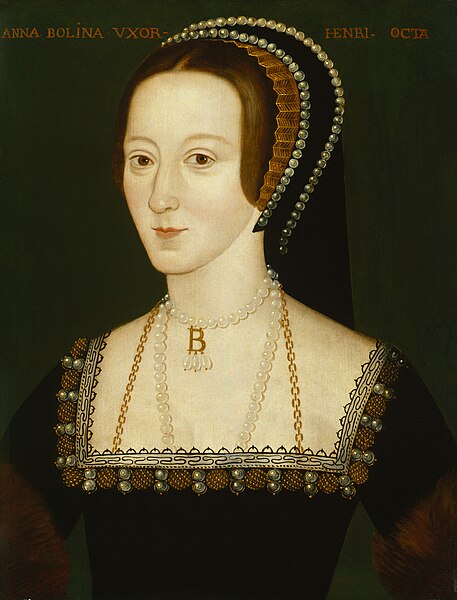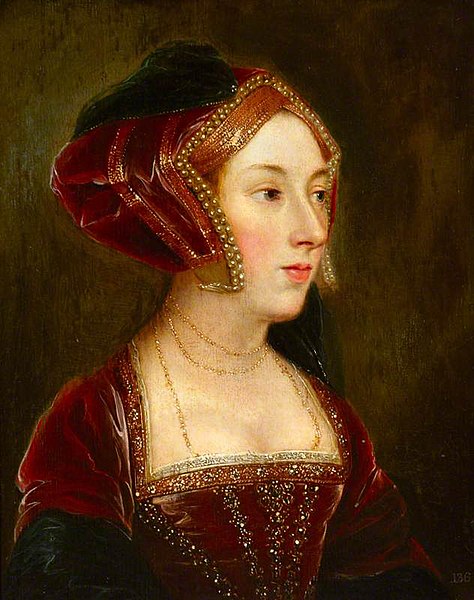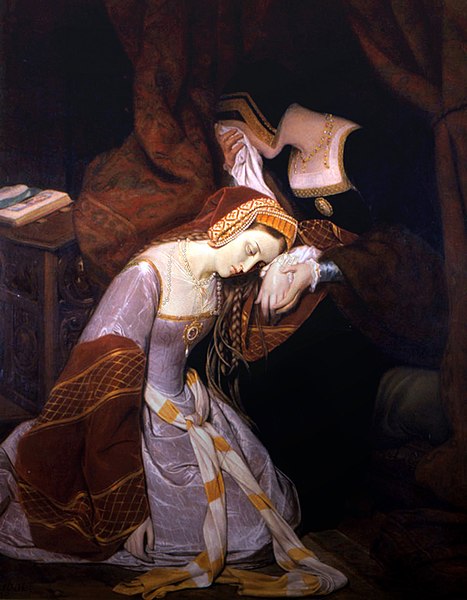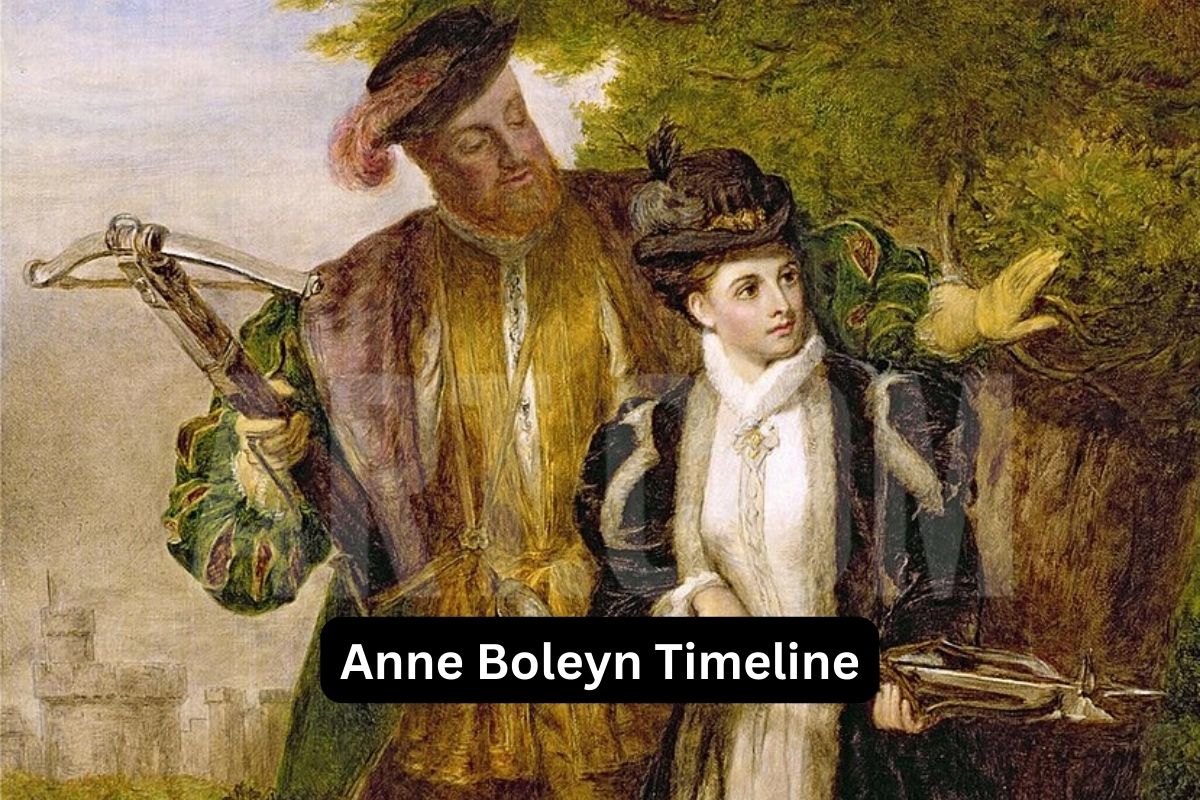Anne Boleyn (c. 1501 – May 19, 1536) was a prominent figure in English history known for her role in the English Reformation. She was born into the Boleyn family and received her education in the Netherlands and France.
Anne returned to England and became a lady-in-waiting to Queen Catherine of Aragon, eventually catching the eye of King Henry VIII.
Her relationship with Henry led to England’s break from the Roman Catholic Church and the establishment of the Church of England, with Henry as its Supreme Head. Anne secretly married Henry and was crowned queen consort. She gave birth to Elizabeth, who would later become Queen Elizabeth I.
However, Anne’s inability to provide a male heir led to her downfall. She was arrested, tried on charges of adultery and treason, and executed by beheading in 1536. Her marriage to Henry was declared null and void, and her daughter Elizabeth was declared illegitimate.
Despite her tragic end, Anne Boleyn’s impact on English history, including her daughter’s reign, remains significant.

| Year | Event |
|---|---|
| c. 1501 | Anne Boleyn is born |
| 1514 | Anne sent to the Netherlands and France for education |
| 1525 | Anne returns to England and catches Henry VIII’s eye |
| 1526 | Anne becomes a lady-in-waiting to Queen Catherine of Aragon |
| 1527 | Henry VIII seeks an annulment of his marriage to Catherine |
| 1532 | Anne accompanies Henry VIII on a state visit to France |
| 1533 | Anne secretly marries Henry VIII and is crowned queen consort |
| 1534 | The Act of Supremacy is passed, establishing the Church of England |
| 1536 | Anne gives birth to her daughter, Elizabeth |
| May 2, 1536 | Anne is arrested and imprisoned in the Tower of London |
| May 19, 1536 | Anne is tried, found guilty, and executed by beheading |
| 1540 | Henry VIII marries his third wife, Jane Seymour |
Timeline of Anne Boleyn
c. 1501 – Anne Boleyn is born
Anne Boleyn’s exact birth date is uncertain, but she is believed to have been born around the year 1501. She was born into the Boleyn family, a prominent English noble family with ties to the royal court.
1514 – Anne sent to the Netherlands and France for education
As a young girl, Anne was sent abroad for her education, a common practice among the nobility of the time.
She received her education in the Netherlands and France, where she was exposed to the Renaissance culture and humanist ideas that would later influence her thinking.

1525 – Anne returns to England and catches Henry VIII’s eye
Anne returned to England after completing her education. Her time abroad had transformed her into a cultured and sophisticated young woman, and she soon caught the eye of King Henry VIII, who was married to Catherine of Aragon at the time.
Henry’s interest in Anne marked the beginning of a complex and tumultuous relationship.
1526 – Anne becomes a lady-in-waiting to Queen Catherine of Aragon
Anne Boleyn entered the English court as a lady-in-waiting to Queen Catherine of Aragon, Henry VIII’s first wife.
This position allowed her to be in close proximity to the royal family and the king himself. Her presence at court further fueled Henry’s infatuation with her and set the stage for the events that would follow.
1527 – Henry VIII seeks an annulment of his marriage to Catherine of Aragon
In 1527, King Henry VIII became increasingly frustrated with his marriage to Catherine of Aragon. Despite many years of marriage, Catherine had not produced a male heir to the throne, and Henry was eager to secure the succession.
He believed that his marriage was cursed because Catherine had previously been married to his older brother, who died, and Henry sought an annulment from the Pope on the grounds that his marriage was invalid.
1532 – Anne accompanies Henry VIII on a state visit to France
Anne Boleyn’s influence at court continued to grow, and in 1532, she accompanied Henry VIII on a state visit to France. This visit was significant as it helped cement her position as Henry’s consort and marked the beginning of a more public relationship between them.
1533 – Anne secretly marries Henry VIII and is crowned queen consort
In 1533, Anne Boleyn and Henry VIII secretly married. This marriage was kept secret due to ongoing negotiations for the annulment of Henry’s marriage to Catherine of Aragon.
Nevertheless, Anne was crowned queen consort of England in a private ceremony. Around this time, Henry also broke away from the Roman Catholic Church after the Pope refused to annul his marriage.
1534 – The Act of Supremacy is passed, establishing the Church of England
In 1534, the English Parliament passed the Act of Supremacy, which declared Henry VIII as the Supreme Head of the Church of England. This marked the formal establishment of the Church of England and the break from papal authority.
The marriage to Anne and the subsequent annulment of his marriage to Catherine played a pivotal role in this religious and political transformation, known as the English Reformation.
1536 – Anne gives birth to her daughter, Elizabeth
In 1536, Anne Boleyn gave birth to her only surviving child, Elizabeth. Elizabeth would later become one of England’s most celebrated monarchs, Queen Elizabeth I.
However, Anne’s inability to provide a male heir further strained her relationship with Henry VIII.

May 2, 1536 – Anne is arrested and imprisoned in the Tower of London
Anne’s fortunes took a dramatic turn in 1536. She was arrested on charges of adultery, incest, and high treason. These charges were brought against her by her political enemies, and some historians believe they were fabricated or exaggerated.
Anne was imprisoned in the Tower of London, the same place where she had been crowned queen just three years earlier.
May 19, 1536 – Anne is tried, found guilty, and executed by beheading
Anne Boleyn’s trial took place on May 15, 1536, with her uncle, Thomas Howard, Duke of Norfolk, presiding over the court. She was found guilty of the charges brought against her, which included allegations of adultery with several men, including her own brother, George Boleyn.
On May 19, 1536, Anne was executed by beheading at the Tower of London. Her execution was swift and carried out by a skilled swordsman from France rather than the traditional ax.
Anne’s marriage to Henry VIII is declared null and void
Following her execution, Anne Boleyn’s marriage to Henry VIII was declared null and void, meaning it was officially annulled. Her daughter, Elizabeth, was declared illegitimate, although she would later become queen and rule as Elizabeth I.
1540 – Henry VIII marries his third wife, Jane Seymour
After Anne Boleyn’s death, Henry VIII married Jane Seymour, his third wife. Jane Seymour would go on to give birth to the long-awaited male heir, Edward VI, but she tragically died shortly after childbirth.
